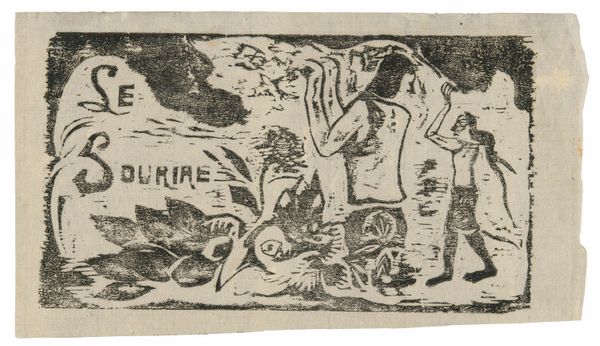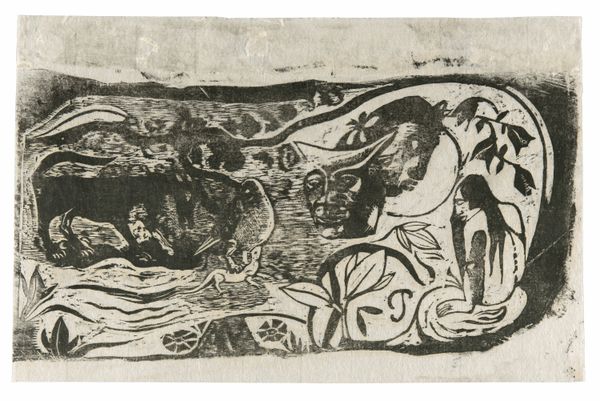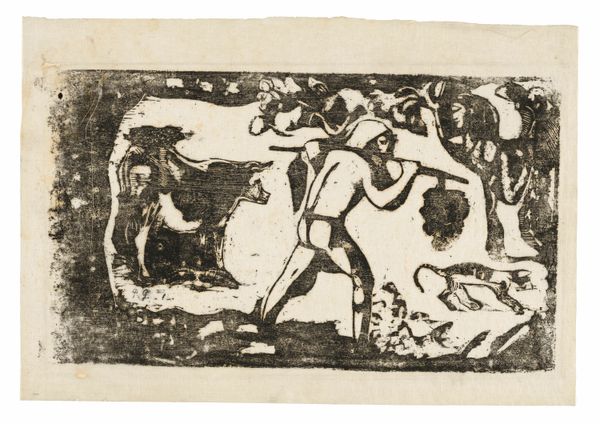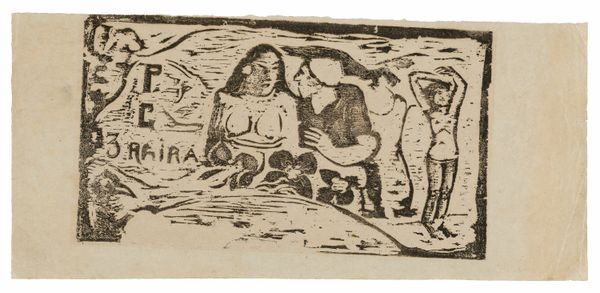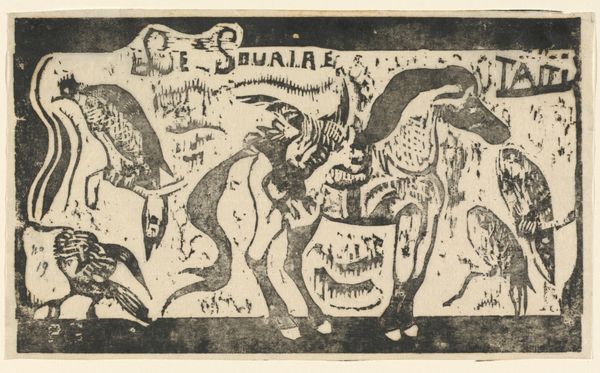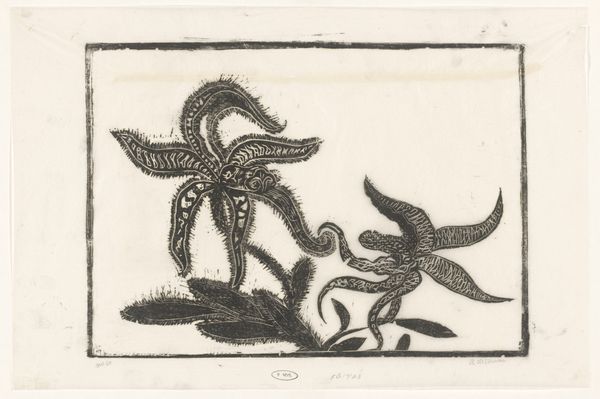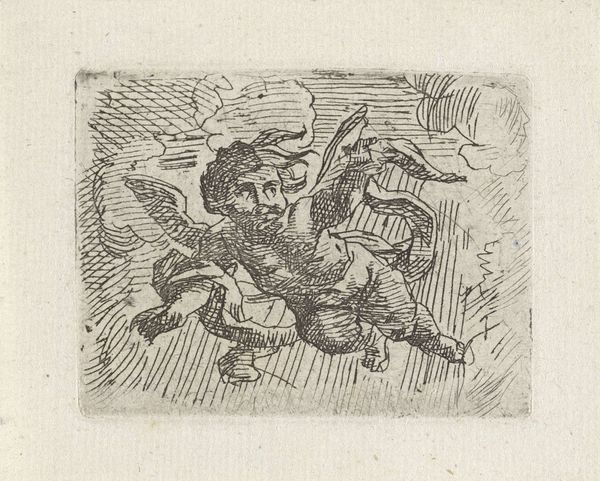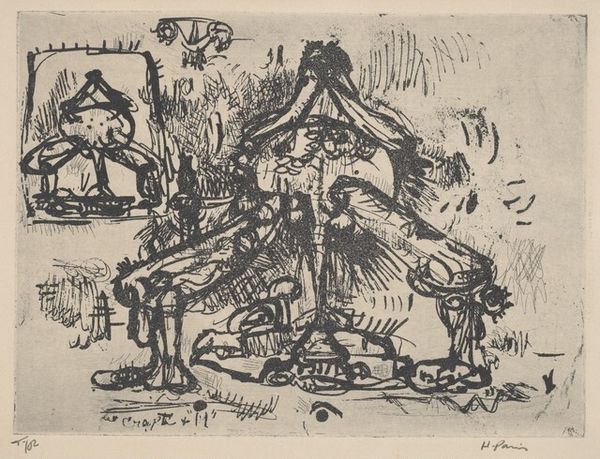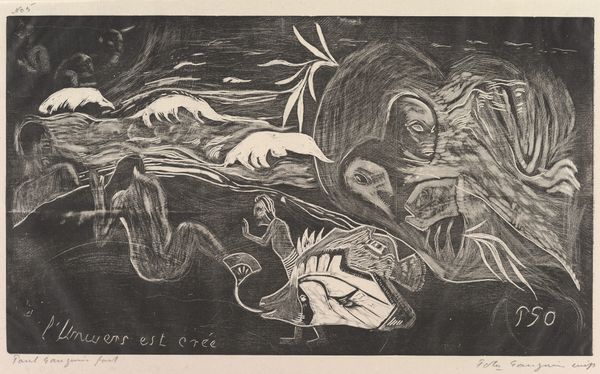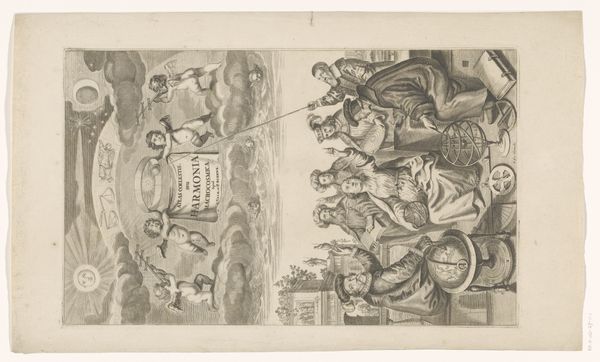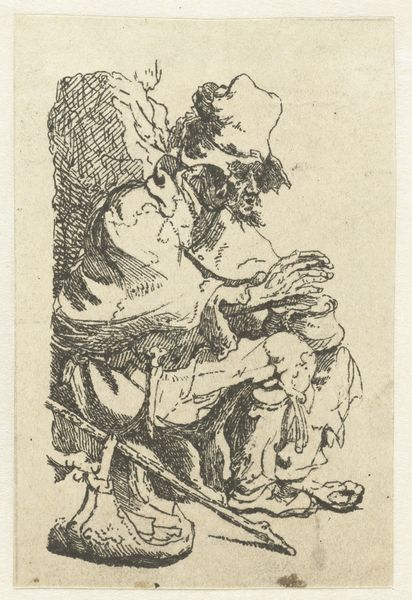
Tahitians, Flowers, and Leaves, headpiece for Le sourire 1899 - 1900
0:00
0:00
print, paper, woodcut
#
narrative-art
# print
#
landscape
#
figuration
#
paper
#
linocut print
#
woodcut
#
symbolism
#
post-impressionism
Dimensions: 104 × 183 mm (image); 132 × 240 mm (sheet)
Copyright: Public Domain
Editor: So this is Paul Gauguin's "Tahitians, Flowers, and Leaves, headpiece for Le sourire", made between 1899 and 1900. It's a woodcut print on paper and it strikes me as both primitive and sophisticated in its design. What are your thoughts on this artwork? Curator: The roughness is key, wouldn’t you say? It highlights the physical labor involved in its creation. Gauguin consciously used the woodcut medium, traditionally a 'lower' art form, to depict Tahiti, challenging the established hierarchy of art and subject matter. It invites us to reflect on how artistic value is assigned and to consider the colonial gaze inherent in his work. Editor: So the medium itself carries a message about challenging established artistic norms? Curator: Exactly! Think about the social context. Gauguin abandoned the European art world, seeking a simpler, more authentic existence in Tahiti. However, his work still bears the marks of European artistic traditions and his own biases. The stark contrast of the woodcut emphasizes the material reality of both the artwork and the culture it represents. The textures invite discussion around primitivism and appropriation. How do you perceive the material qualities affecting your reading of the content? Editor: I see what you mean. It’s not just a picture of Tahiti; it’s about the *making* of that picture and what it represents. The raw quality reminds us of the artist’s hand and the tools he used, making the image feel less idealized, more immediate and present. The texture almost embodies the land itself. Curator: Yes! The printmaking process emphasizes the material relationship between artist, medium and subject. Appreciating the social and material aspects allows for a rich and critically engaged experience. Editor: I had never considered how much the actual medium contributed to the message, and this has opened my eyes to the possibilities. Thanks!
Comments
No comments
Be the first to comment and join the conversation on the ultimate creative platform.
